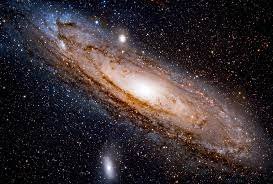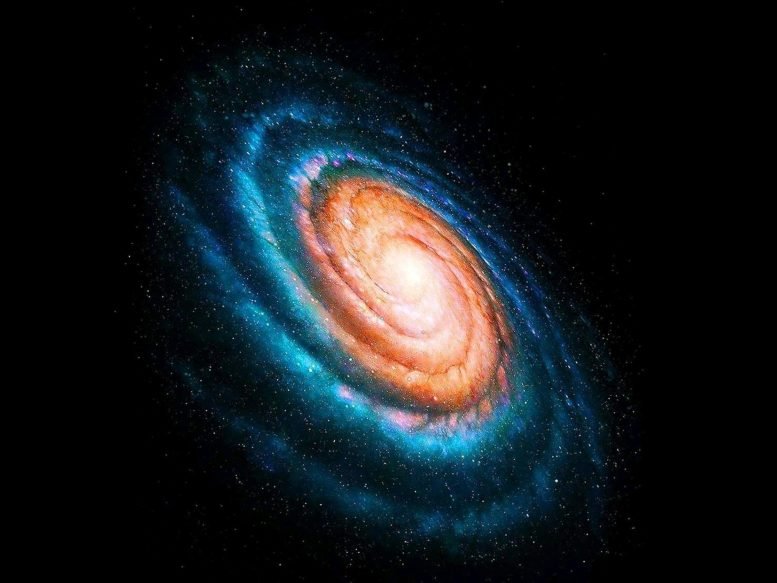A review by Nadia Dawson of a presentation given by Dr Julian Onions entitled “Galaxies – one gigayear at a time”.

I was somewhat perturbed when I read the title of this month’s talk as I knew absolutely nothing about galaxies and had no idea what a gigayear was. With that in mind, I decided I must not prejudge just because I hated physics and chemistry with a passion at school, so I would give our speaker, Dr Julian Onions a chance. I really wouldn’t have been surprised if Julian had stood in front of us in a ‘white coat’, but then I remembered that the TV presenter Professor Brian Cox had actually made basic astronomy quite palatable for the likes of me so, I was prepared to sit back and listen and maybe learn as Julian began his talk.
Like Professor Cox, Julian also had an easy manner and explained that as an astrophysicist based at Nottingham University, he studied objects in the universe including galaxies and stars in order to understand what they are made of, their features, histories and how they were formed. He then went on to explain that a gigayear equals a billion years and a galaxy is a collection of gas, dust and billions of stars and their solar systems all held together by gravity and, just so you know, the word billion regularly slipped off Julian’s tongue in the course of his presentation.

The collection of stars we see when we look up at the sky at night is known as the Milky Way, and it was first identified by William Herschel in 1785 using his own home-made telescope. Julian went on to explain that a galaxy is mostly empty space which is why it is so difficult to explore because it is estimated that it would take 100,000 years to get from one side of our galaxy to the other and that there are more than 100 billion (there’s that word again!) galaxies in the universe.
In 1924, the American astronomer Edwin Hubble revolutionised astronomy when he announced he had evidence that the Milky Way galaxy was just one of many galaxies in an ever-expanding universe. Through his 100inch telescope he saw stars similar to the ones in our galaxy but they were like fuzzy blobs in the night sky. From this, he deduced that other galaxies extended around us in space for many billions (there it is again!) of light years. He did a lot of research and eventually categorised what he saw into four groups according to their shape which he named spirals, ellipticals, lenticulars and irregular galaxies.

Julian confirmed that galaxies are continually making stars with on average, one new star being born every year in the Milky Way. The colour of every star relates to its surface temperature so, the coolest stars in the sky glow red but, as surface temperatures rise, the colours change to orange then yellow with the hottest stars glowing a dark blue. At this point my eyes did start to glaze over a bit as my brain just isn’t equipped to handle these enormous figures and I really can’t imagine seeing red and blue stars in my night sky?? Nevertheless, both Julian and I persevered, and I was extremely surprised when he said that he doesn’t spend all his time looking through a telescope but loading models of the universe onto a computer in order to see invisible stuff called dark matter and dark energy. From the simulations produced by the computer, it is possible to make predictions about their behaviour but we’re limited by the speed of light as the universe began 13.8 billion (there it is again!) years ago.

Whilst I’m still trying to ‘take in’ all this information, Julian moves on to discuss quasars which were only discovered in 1963. A quasar is always found near a supermassive black hole and every galaxy, including ours, has a black hole at its centre. Anything that falls into a black hole disappears forever, but nobody actually knows why so not only are there still many, many unanswered questions for today’s and tomorrow’s astrophysicists to get their teeth into, but there are also new space telescopes being built to try and help answer these questions too. In the meantime, thanks to Julian, I am definitely now more aware of what else is ‘up there’ when I look at those twinkling stars in a clear black sky.

Leave a Reply
You must be logged in to post a comment.